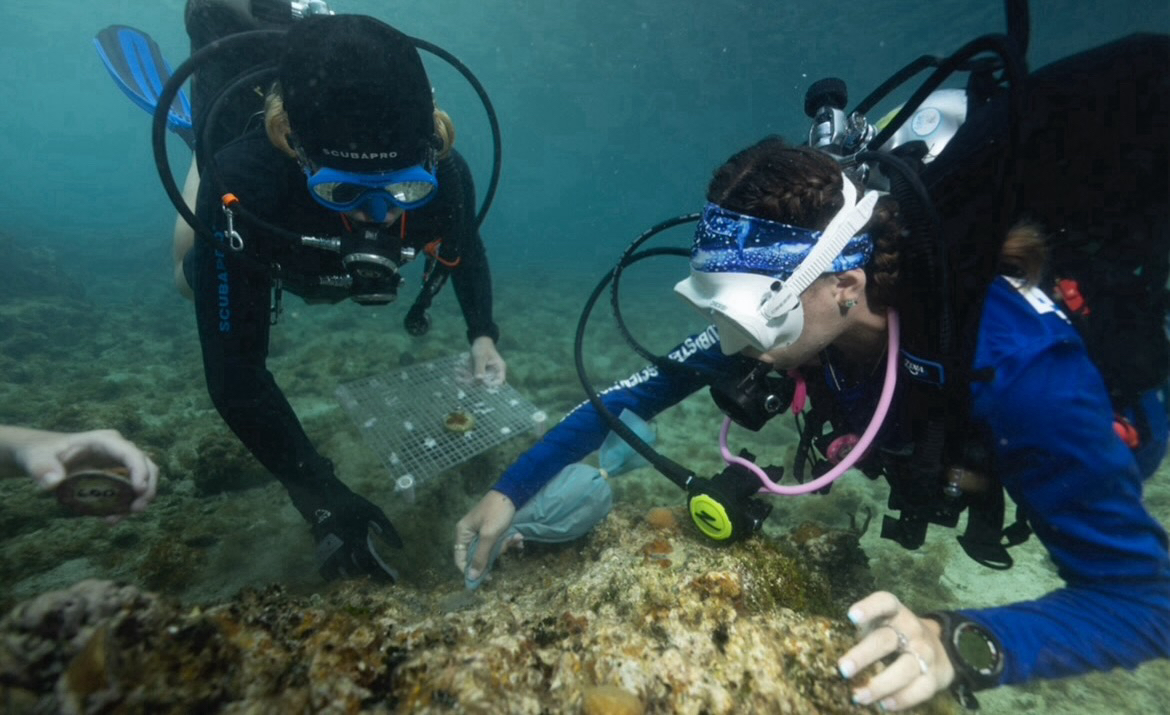Approximately 15.1 million tons of waste was created from textiles in 2013, but the numbers have continued to grow. The textile industry produces a large mass of waste every year. The fashion industry has created and perpetuates wasteful practices such as using low-quality materials, poor environmental practices, and unethical production. This has become known as fast fashion. Switching to sustainable fashion can help our environment, the working conditions of the producers, and our future.
The concept of fast fashion in general creates many issues. Through fast fashion, the fashion industry has made money by continuously releasing new products year-round at extremely low prices. This strategy leads to products that are intentionally poorly-made, resulting in the need to purchase new clothes more often. When these clothes wear out and are thrown away, more clothing is added to landfills. Many are unaware of how much damages this does to our Earth. Planet Aid, a non-profit dedicated to recycling, explains that clothes can take several decades to decompose while shoes might remain intact for up to 1,000 years. These textiles will outlive their previous owners. Not only is there a significant impact on the environment when clothes are thrown out, but there is also a significant impact on the Earth during the production of new clothes. When looking at the statistics, Planet Aid has done extensive research. It found that it can take several hundred gallons of water to make a shirt. As companies mass-produce new shirts so frequently, they use large quantities of water that could be put to other uses. Not only are there issues with production, but also with the ways clothing is disposed of. Graphs from the United States Environmental Protection Agency show a rise in the amount of clothing in landfills from 1960 all the way to 2017. By 2017, landfills had amassed 8.9 million tons of clothing and footwear. These statistics show the frightening amount of waste in landfills that only continues to rise every year.
In addition to environmental trauma, fast fashion uses unethical means to produce its clothing. This means poor working conditions, low pay, minimal salaries, and, in some cases, child labor. As time has progressed, less and less clothing is made in the United States and more and more of it is outsourced internationally. This is done because international labor laws vary from those in the United States. In most countries where this work is being outsourced, the minimum wage is lower and the regulations are looser, making the entire process cheaper. Recently more research has been done on the working conditions of the laborers overseas. There are multiple instances of workplace tragedies that have occurred. Some of these incidents include collapsing buildings and dangerous equipment. With fewer regulations, these issues were not addressed prior to major incidents, such as those that have killed and injured many workers. In addition to large-scale incidents, the basic working conditions are also inhumane. It is common to find low light and toxic chemicals in the air because costs can be cut from air filters, electricity, and light bulbs. Furthermore, workers are not compensated for their dangerous work. They are underpaid with their minimum wage paychecks at $67 a month as of 2016. These factors allow for clothing to be made in large quantities, frequently, and at a cheap price. This also allows for the clothing to be sold at low prices, one of the main attractions to fast fashion by consumers.
Despite the prominence of fast fashion, sustainable fashion is beginning to appear on the market. The focus of sustainable fashion is to create timeless and high-quality fashion that limits waste and works for ethical production. The goal is to have clothing last longer physically while also lasting through the trends of the fashion industry. Both goals lower the number of new clothes that need to be purchased. This is an example of how sustainable fashion brands are working to earn the right to advertise that they are sustainable. Another way fashion companies are working to extend the life of clothing is by using natural materials. CNN Business explains that when using natural materials, the fibers can be reused to make new garments. This cuts down on waste by having a plan for reusing the clothing after it has reached the end of its life. Since the fashion industry will inevitably continue to produce more clothing, the more we can reuse the materials, the smaller the impact on the Earth.
In addition to changing the way they produce clothing, companies are also becoming more transparent about the processes they use to create their products. As more information has started to surface about the unethical practices used by many companies, more people are interested in learning about the processes used by stores. Heightened interest in the transparency of production and concern about the environment have pushed some companies to release information about their practices. It also has convinced some companies to rethink their operations. The changes companies are making range from how they reduce waste to the working conditions of producers. CNN Business reports, “…consumers have not only become more conscious of where their clothes end up, but also factory working conditions and where the garment comes from.” With consumers concerned about the back story of their purchases, companies are becoming more aware of their impact. CNN Business also notes, “There is an underlying demand for retailers to not only be more transparent but to also make the information they are providing as accessible as possible.” It is important to acknowledge that this is progress toward a sustainable fashion industry. If consumers are interested in sustainable and ethical production, more companies will adopt better practices.
The world of sustainability can be confusing and, in some cases, misleading, but there are many ways consumers can begin to change their clothing consumption. Simply being aware of the issues that exist in the fashion industry is important. Change cannot take place if the issue is not publicized. There are two main ways that consumers can support the sustainable fashion movement: shopping second-hand and shopping from stores that market themselves as ethical and environmentally sustainable. For example, one of the best ways to shop sustainably is to thrift. Thrift stores offer good prices on many types of items ranging from basic brands to high-end clothing. Another way to shop second-hand is through websites such as Poshmark and Depop. These websites allow consumers to buy specific pieces of clothing from an individual. This can be handy when consumers are looking for a specific item. Shopping for clothes second-hand is the best way to obtain clothing because it reuses clothing that has already been made, but sustainable fashion brands also exist. There are entire stores dedicated to ensuring their clothing is made ethically and has minimal impact on the Earth. Some examples are Reformation, Eileen Fisher, and People Tree. Another way to support sustainable fashion is by donating used, unworn, or poorly fitting clothing. Again, the use of fashion selling websites can be useful. It is important to acknowledge that to create a sustainable fashion industry brands need to commit to sustainable practices, but consumers also need to use sustainable methods for removing clothes from their closets.
While society is on its way to a sustainable fashion industry, there is more work to be done. It will take cooperation between large companies and the consumers that purchase their products. A combination of environmentally friendly production of clothing and ethical working conditions will set the world up for a more sustainable future. Though this is a large issue, one person can make a large difference. Whether an individual spreads information, switches to sustainable fashion brands, or takes up thrifting, every person helps the cause. Making even one small change will put the world on the road to a greener world and a better future.





